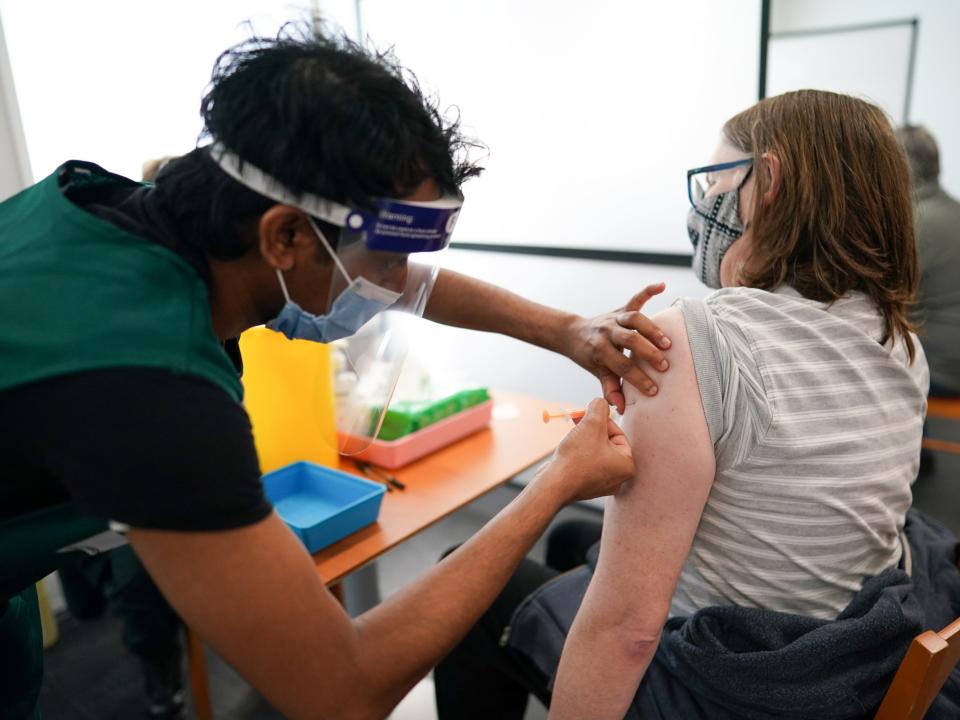Mixing Covid vaccine doses more likely to trigger short-term symptoms, study finds

Mixing vaccines can produce more side effects, according to the study
(Getty)Mixing vaccine doses triggers more pronounced short-term side effects in people when compared to administering two shots of the same Covid jab, new research has shown.
First launched in February by researchers at Oxford University, the Com-Cov study is examining whether doses of the Oxford/AstraZeneca and Pfizer/BioNTech vaccines can be safely mixed.
The treatment, known as a heterologous prime-boost, can only be administered with licensed jabs and involves using one dose each of two different vaccines.
Amid supply shortages that could limit the availability of certain vaccines, alongside changing recommendations for use of the AstraZeneca jabs, there is growing belief among health officials that heterologous prime-boosts will be needed to fully inoculate people in the months ahead.
In light of this, the Com-Cov study, led by Oxford’s Professor Matthew Snape, has sought to provide answers on the safety and effectiveness of “mixing and matching” different vaccines.
Early data from the research, published in The Lancet, has found that using a first dose of the AstraZeneca jab followed by a second dose of the Pfizer vaccine, and vice versa, induced “greater systemic reactogenicity” than a standard, homologous dosing schedule.
Watch: In-Depth - Is mixing COVID-19 vaccines okay?
A larger percentage of participants who received two different doses over a 28-day period reported feverishness, chills, fatigue, headache, joint pain and muscle ache after their second dose compared with people who were administered two shots of either the Pfizer or AstraZeneca vaccine.
These symptoms were mainly reported as “mild” by the recipients, but there was also an increase in “moderate” and “severe” side effects among those volunteers who received the heterologous prime-boost treatment.
There was no hospitalisation following the onset of these symptoms, which were short-lived, with the mixed dosing schedule ultimately found to be safe.
A total of 830 people aged 50 and over were recruited into the study. This group was split in two: 463 participants were given a mixed or standard dosing regime over 28 days, and 367 volunteers were vaccinated with the same combinations but over 12 weeks.
The researchers acknowledged that reactogenicity – the expression of expected side effects following vaccination – could be higher in younger age groups.
Data on the levels of immunity generated by mixing and matching are also expected to be reported early next month.
Prof Snape, an expert in paediatrics and vaccinology at Oxford, said: “Whilst this is a secondary part of what we are trying to explore through these studies, it is important that we inform people about these data, especially as these mixed-dose schedules are being considered in several countries.
“The results from this study suggest that mixed-dose schedules could result in an increase in work absences the day after immunisation, and this is important to consider when planning immunisation of healthcare workers.
“Importantly, there are no safety concerns or signals, and this does not tell us if the immune response will be affected.
“We hope to report these data in the coming months.
“In the meantime, we have adapted the ongoing study to assess whether early and regular use of paracetamol reduces the frequency of these reactions.”
Prof Snape added that the number of symptoms did not vary too much depending on which vaccine was given first.
He said: “They’re very very similar actually when you look at them.
“It slightly differs according to whether it was chills or fatigue that you’re looking at, but actually they were remarkably similar across the board.”
Watch: Do coronavirus vaccines affect fertility?
Read More
Record 5 million people now on NHS waiting list for routine treatment
Scientists hold urgent talks amid fears Indian Covid variant could delay final lockdown exit

 Yahoo Finance
Yahoo Finance 